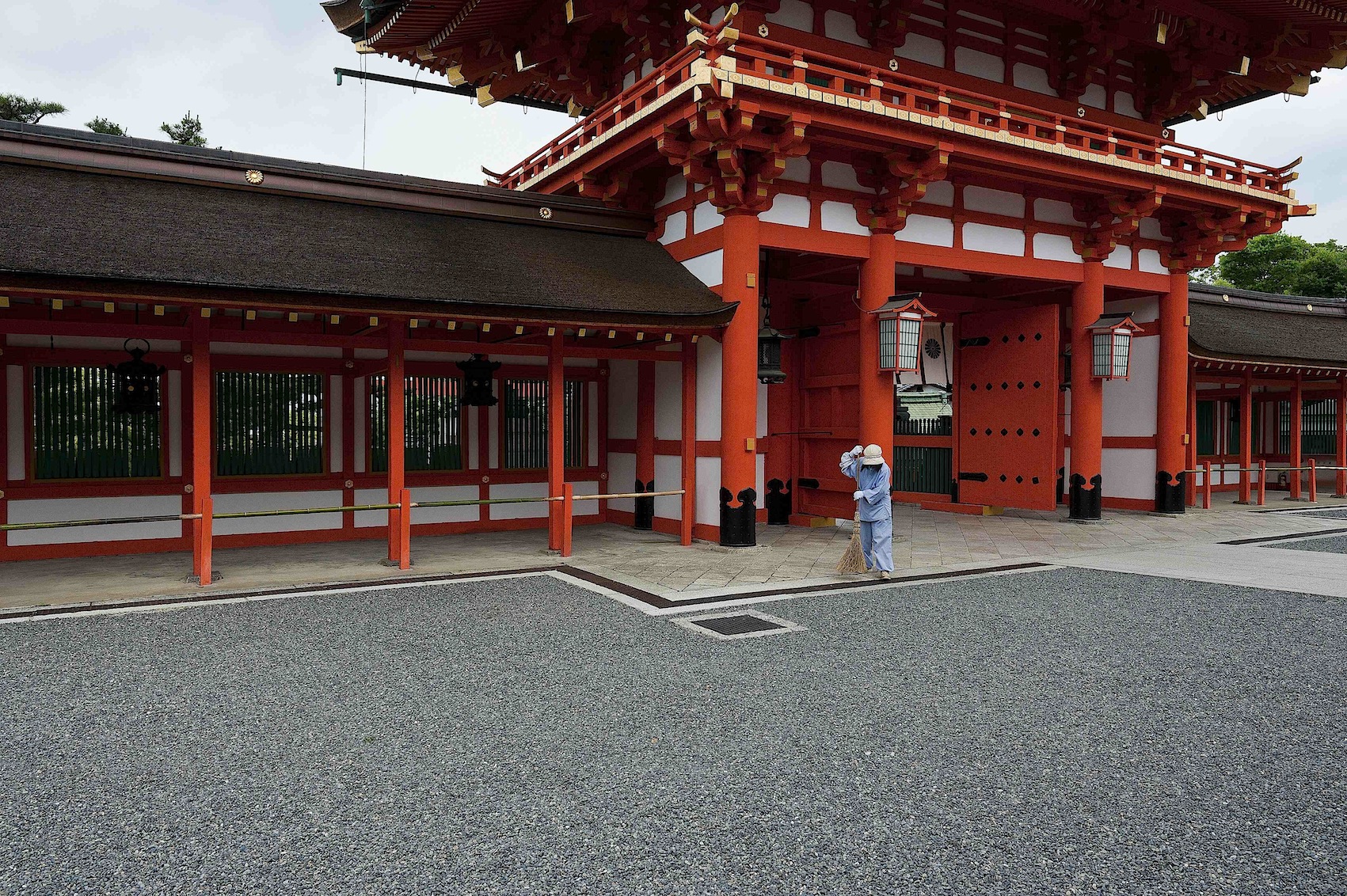
Il santuario di Yasaka a Gion
Qualcuno sostiene che si celi del romanticismo nella cerimonia giapponese del tè! Non intendo contraddire tale nobiltà d’animo e di pensiero, ma dopo il primo quarto d’ora passato in ginocchio per fotografarla, in una classica casa di Kyoto, qualche dubbio in merito mi è venuto. Romanticismo o meno la mia esperienza ginocchioni sul tatami è comunque stata intensa e l’opportunità di partecipare ad una cerimonia molto privata, offertami grazie a fortuite circostanze, la considero un regalo forse immeritato.
Da anni volevo vedere Kyoto e i suoi templi. Dopo aver letto con ingordigia “Ore giapponesi”, la summa di ciò che bisogna sapere sul Paese dove il sole si leva, di Fosco Maraini, nippologo di eccelso livello e scrittore coinvolgente come pochi, e poi, con attenzione, “Giorni giapponesi” di Angela Terzani Staude, un condensato di critiche, anche feroci, nei confronti della società così amata da Maraini, il desiderio di confrontarmi con la città dei kimono e delle geishe si era accresciuto di anno in anno, di rimando in rimando.
Nella piena primavera del 2013 un mio zoom, finalmente, cattura le forme elementari del Kinkakuji, il Padiglione d’oro, l’edificio più sfarzoso del Giappone, tutto coperto di oro zecchino, mentre io sono travolto da vocianti moltitudini di studenti in gita. Hanno tutti quanti uniformi ben stirate e ombrelli sempre pronti a dischiudersi per proteggere le stesse uniformi da improvvisi scrosci di pioggia o da troppo insistenti raggi di sole.
Passa un’ora, cambio tempio e mi mangio le mani, perché cartelli, anche in inglese, esplicitano con chiarezza il divieto di fotografare i deliziosi pannelli scorrevoli dell’edificio Jukôin dei padiglioni minimalisti di Daitoku. Poco male se nella stessa mattinata posso dar sfogo alle mie smanie da fotografo, inquadrando da angoli diversi le quindici rocce disposte con imperscrutabile pazienza da
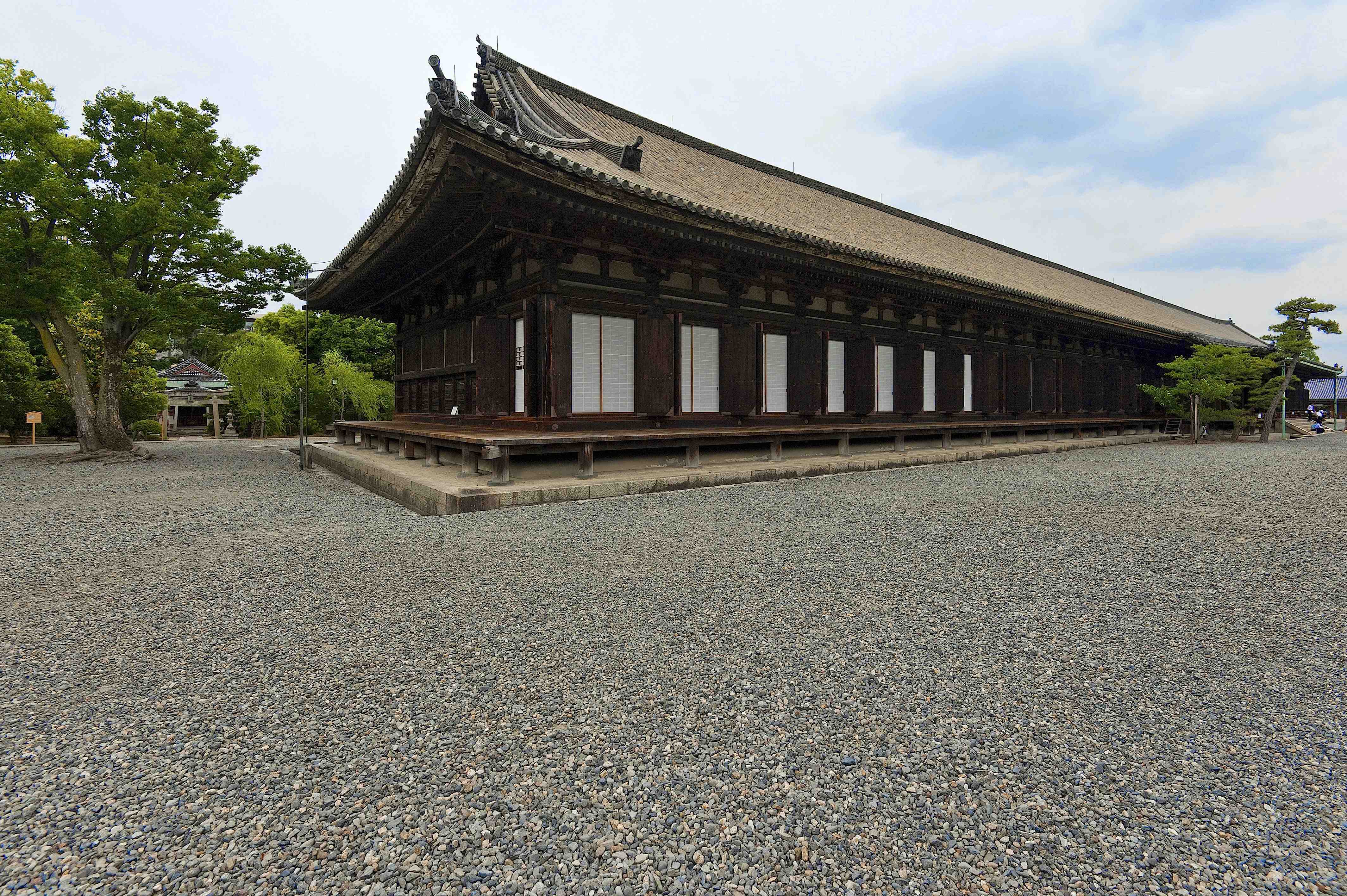
Il tempio di Sanjusangen-do
qualche dozzina di monaci nel laghetto di pietre pettinate del giardino zen del Ryôanji. Poi un autista di taxi in guanti bianchi e berretto d’ordinanza mi trasporta sino all’ingresso principale che si apre nelle mura dei templi di NIshi e Higashi.
Mi piazzo in mezzo al cortile, che potrebbe essere quello della caserma di un battaglione di pellegrini, e tento di ordinare nel mirino le curve eleganti dei tetti. Non passa troppo tempo e mi ritrovo, nel tempio di Sanjusange-do, di nuovo a confronto con il divieto di scattare fotografie. Ancora più esplicito qui che a Daitoku e ripetuto da cartelli in più lingue, sino alla nausea. Il tempio è segnato tra le priorità delle cose che non devo mancare. Ospita mille statue (di cipresso, alte quanto un umano e dorate) di Kannon, la dea della misericordia. Non ci sono guardiani in carne ed ossa (e occhi a mandorla) nel tempio e, confidando nella misericordia di Kannon per i fotogiornalisti, rubo, di nascosto per quanto si può, una dozzina d’immagini. Col fine unico di condividere tanta bellezza con chi non abbia avuto la ventura di entrare nel mirabile tempio, tutto nero, che sembra sia anche, con i suoi 120 metri, l’edificio di legno più lungo del pianeta. Una coppia di signori (moglie e marito?) di una certa età, più o meno la mia, mi sorprende a fotografare. I due fingono di non avermi visto infrangere la legge, scolpita nei cartelli con caratteri anche romani, e mi dimostrano benevolenza. Li avvicino e scopro che lui, architetto ormai in pensione, e lei casalinga con la passione delle belle arti, hanno vissuto per anni a Firenze (di qui la loro complicità?) parlano piuttosto bene l’italiano e gestiscono una casa da tè tradizionale dove l’indomani ospiteranno una cerimonia molto, molto privata. Voglio partecipare? Si, lo voglio. Quattro ore in ginocchio! Ma, si sa, il mestiere del fotogiornalista nasconde spesso imprevedibili insidie e pericoli.
Di ogni sorta.
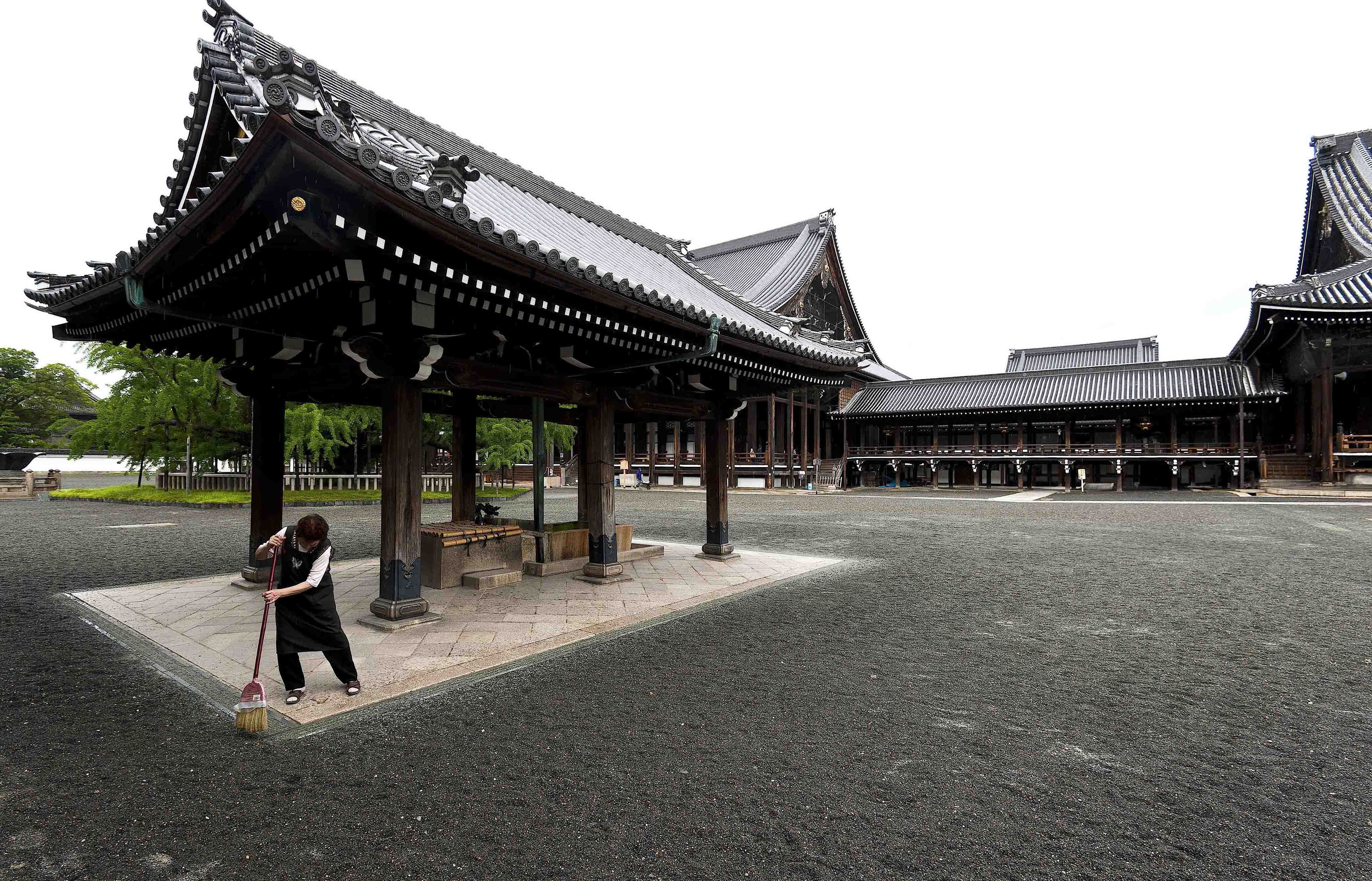
Il tempio di Hongan-Ji
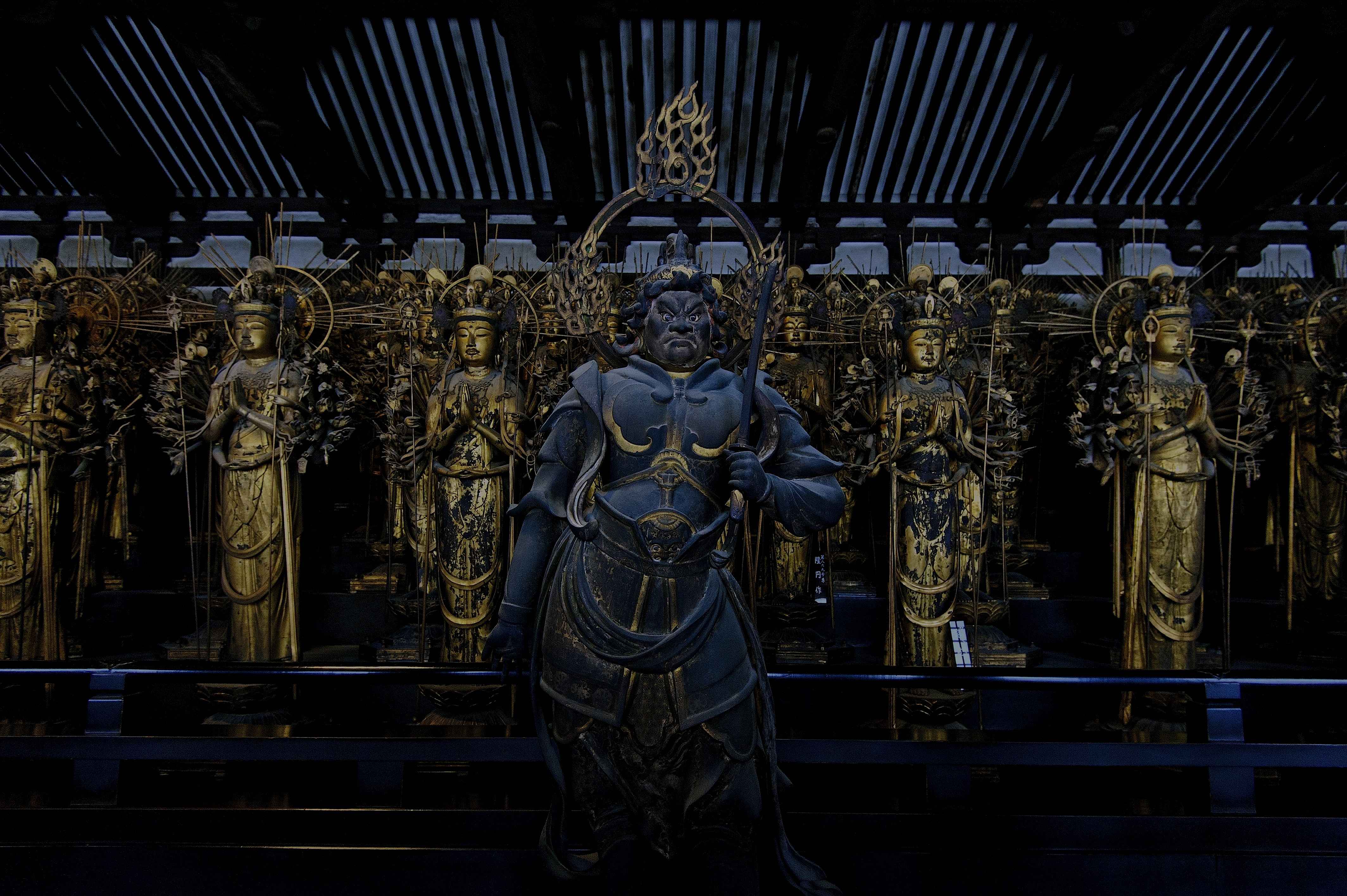
Le 1001 statue della Dea Kannon nel tempio di Sanjusangen-do (Rengeo-in)
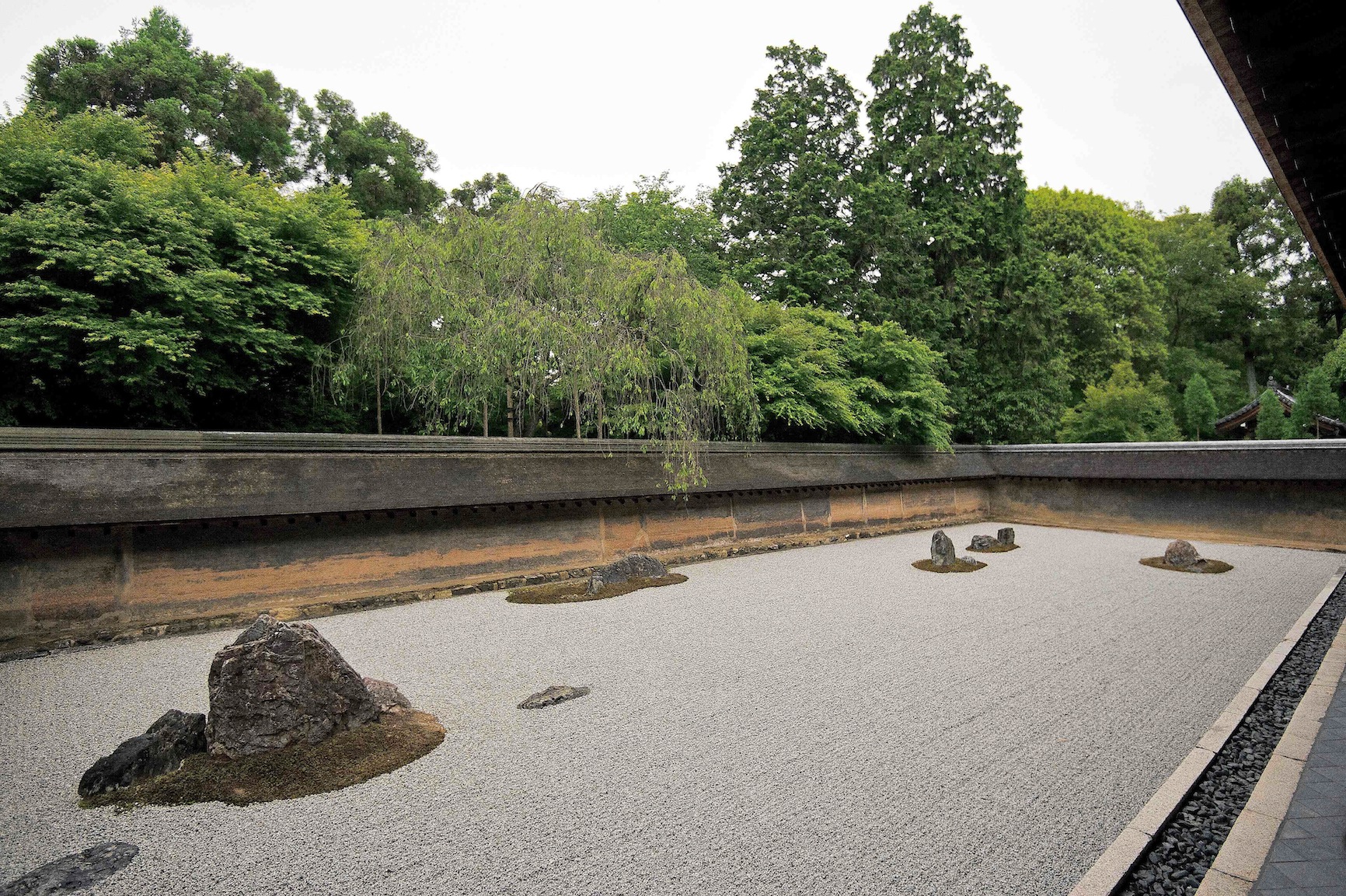
Il giardino di pietra nel tempio di Ryoan-ji
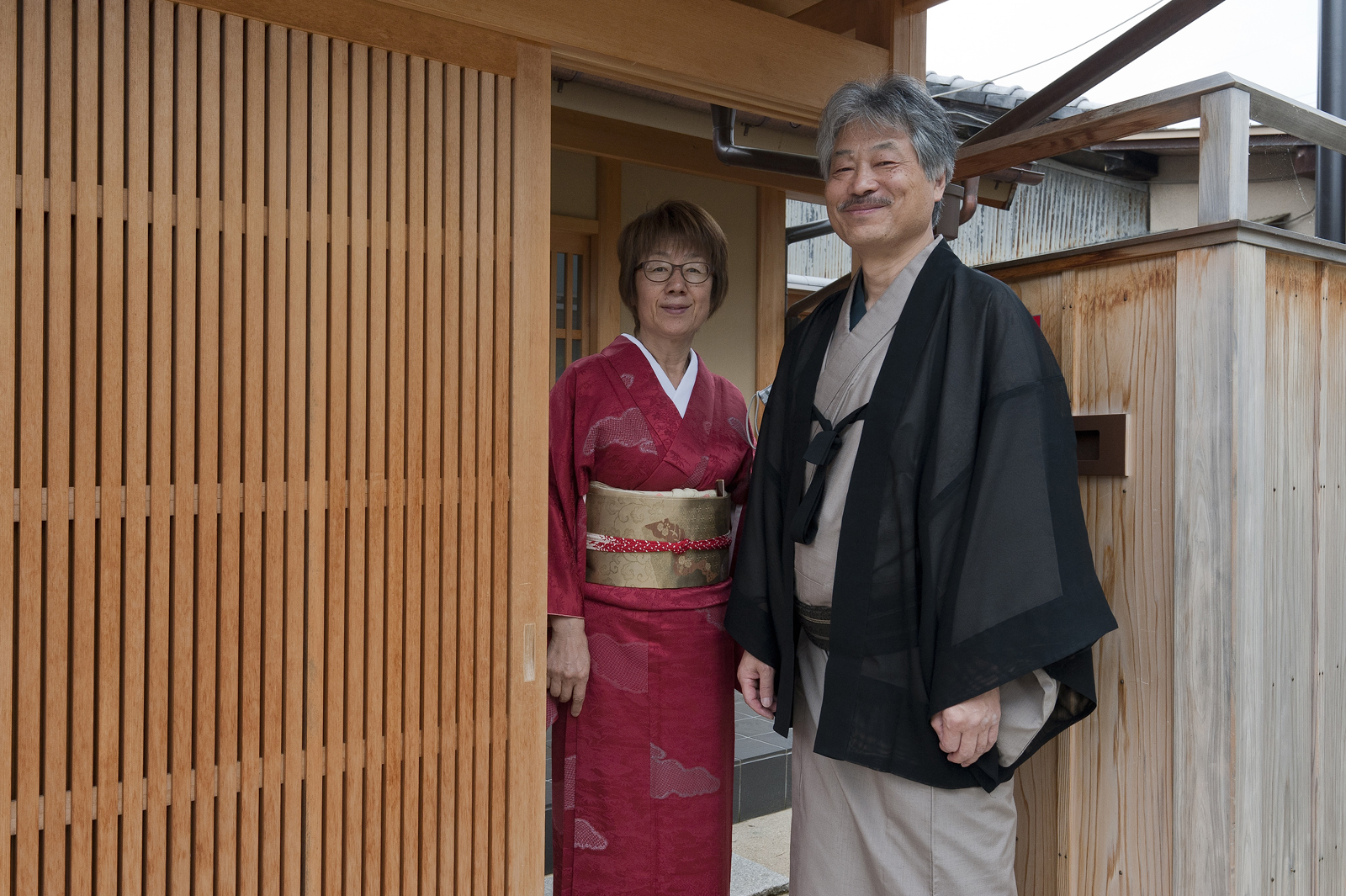
Shummei e Yoko all’entrata della loro casa del tè
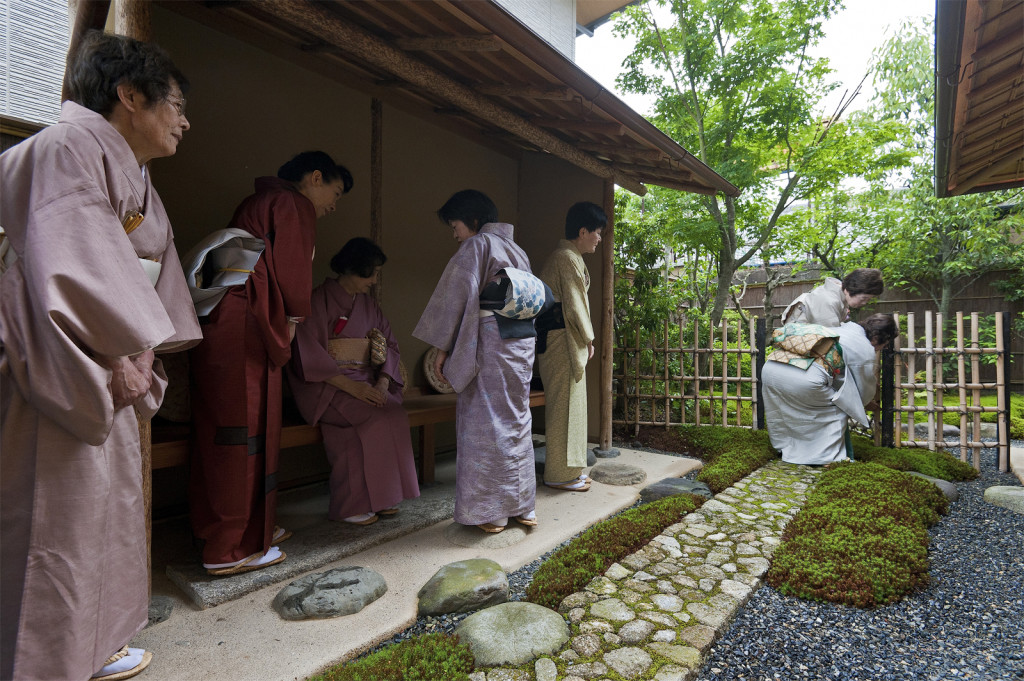
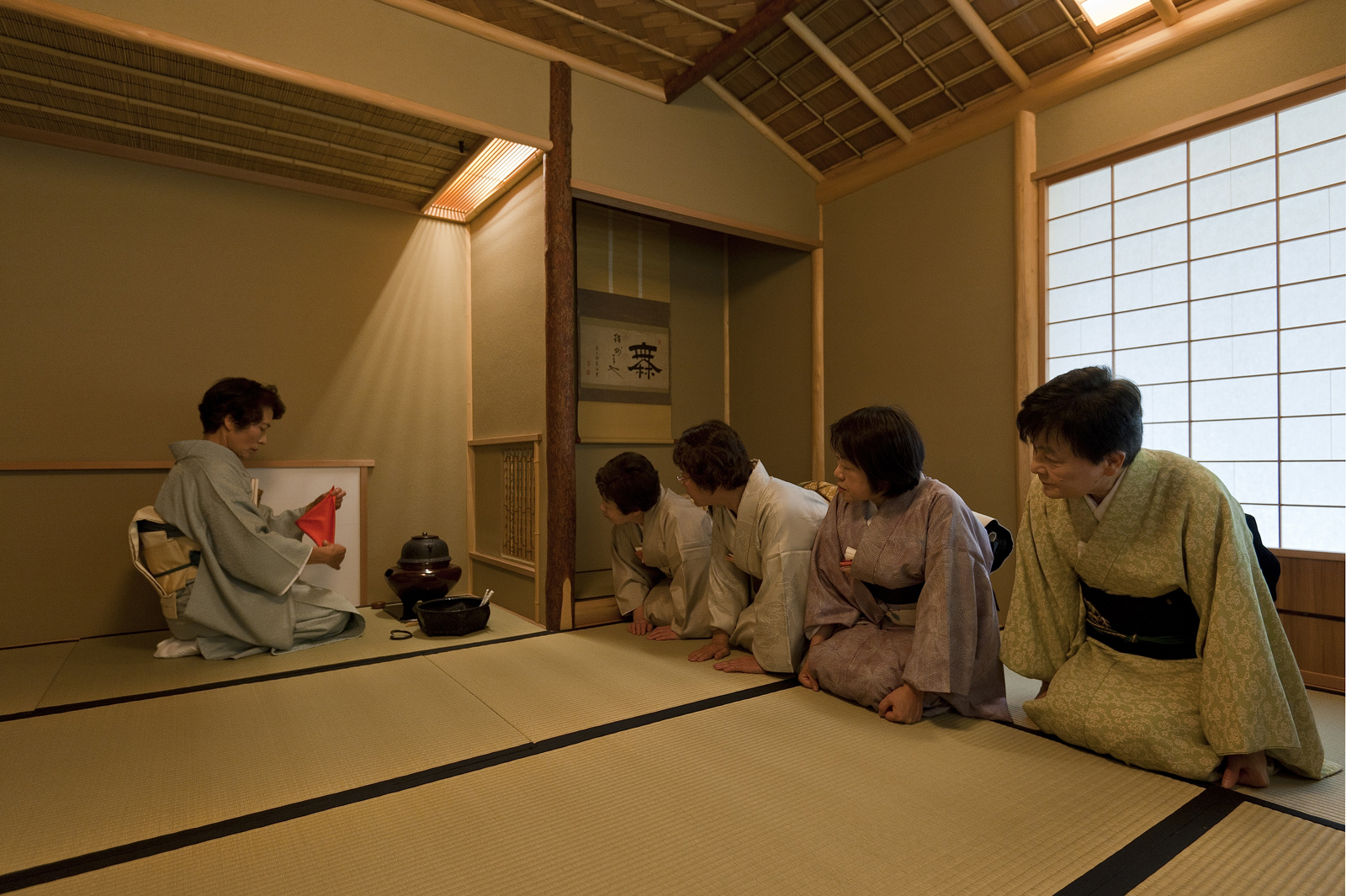
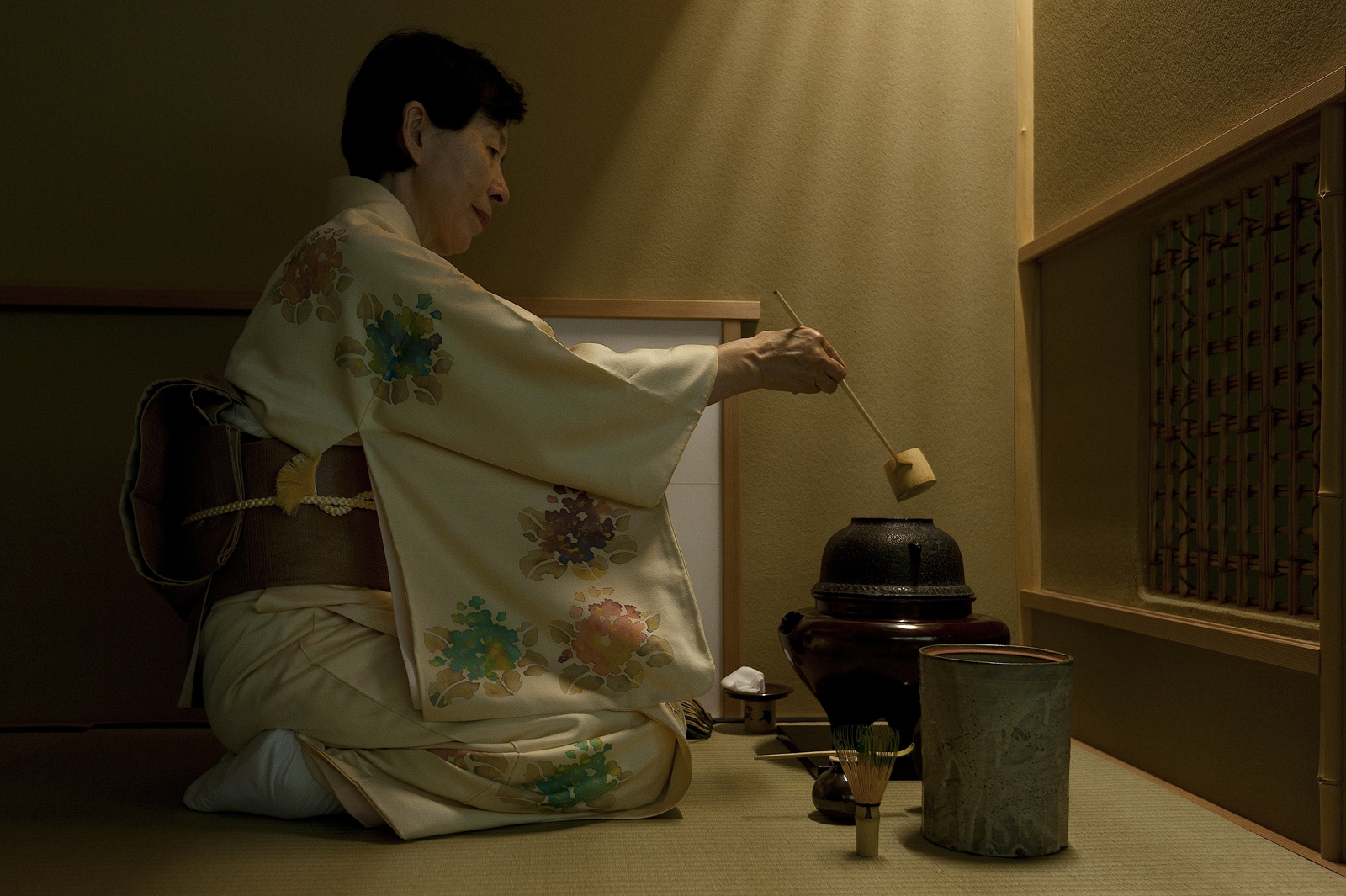
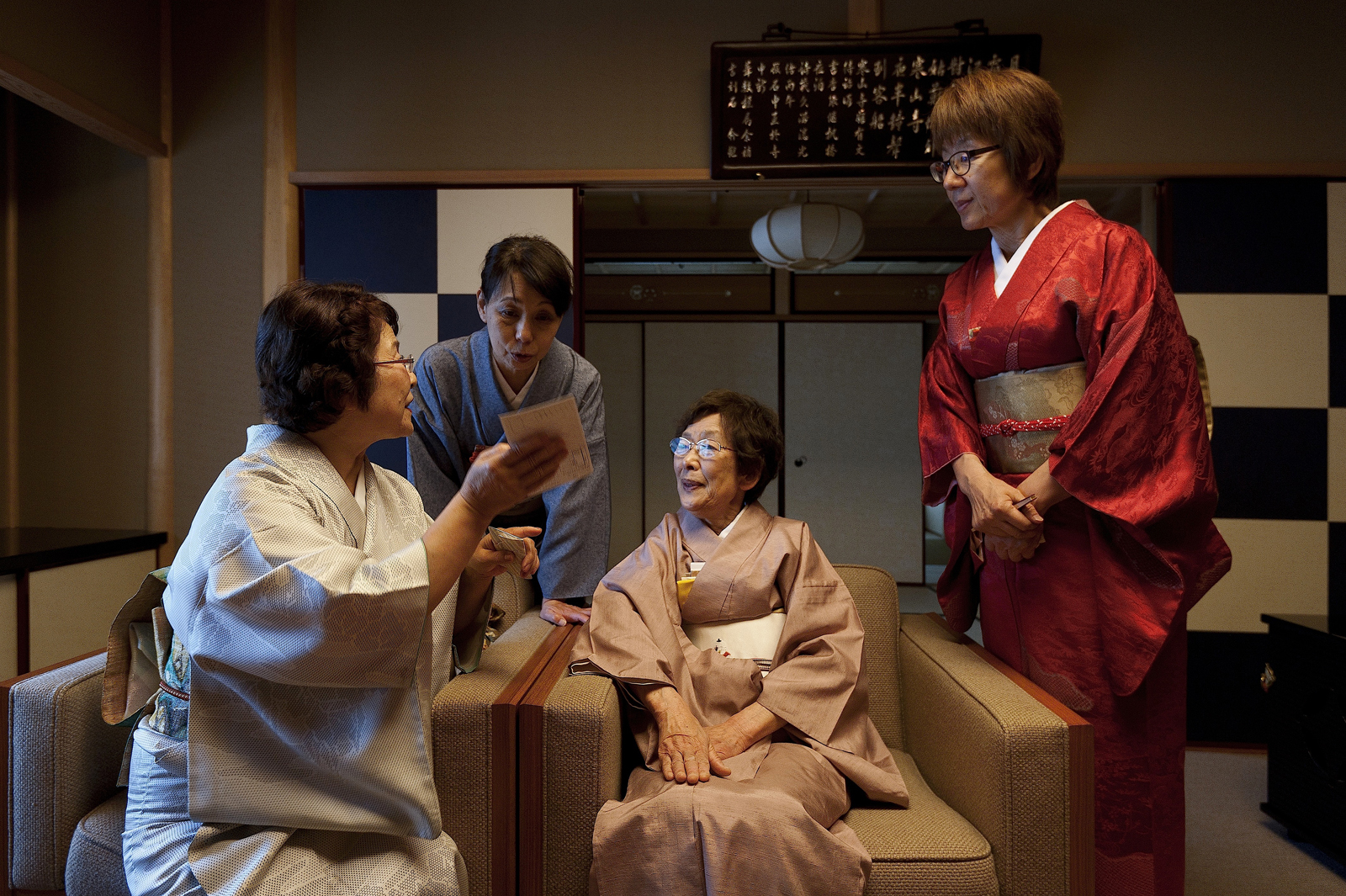
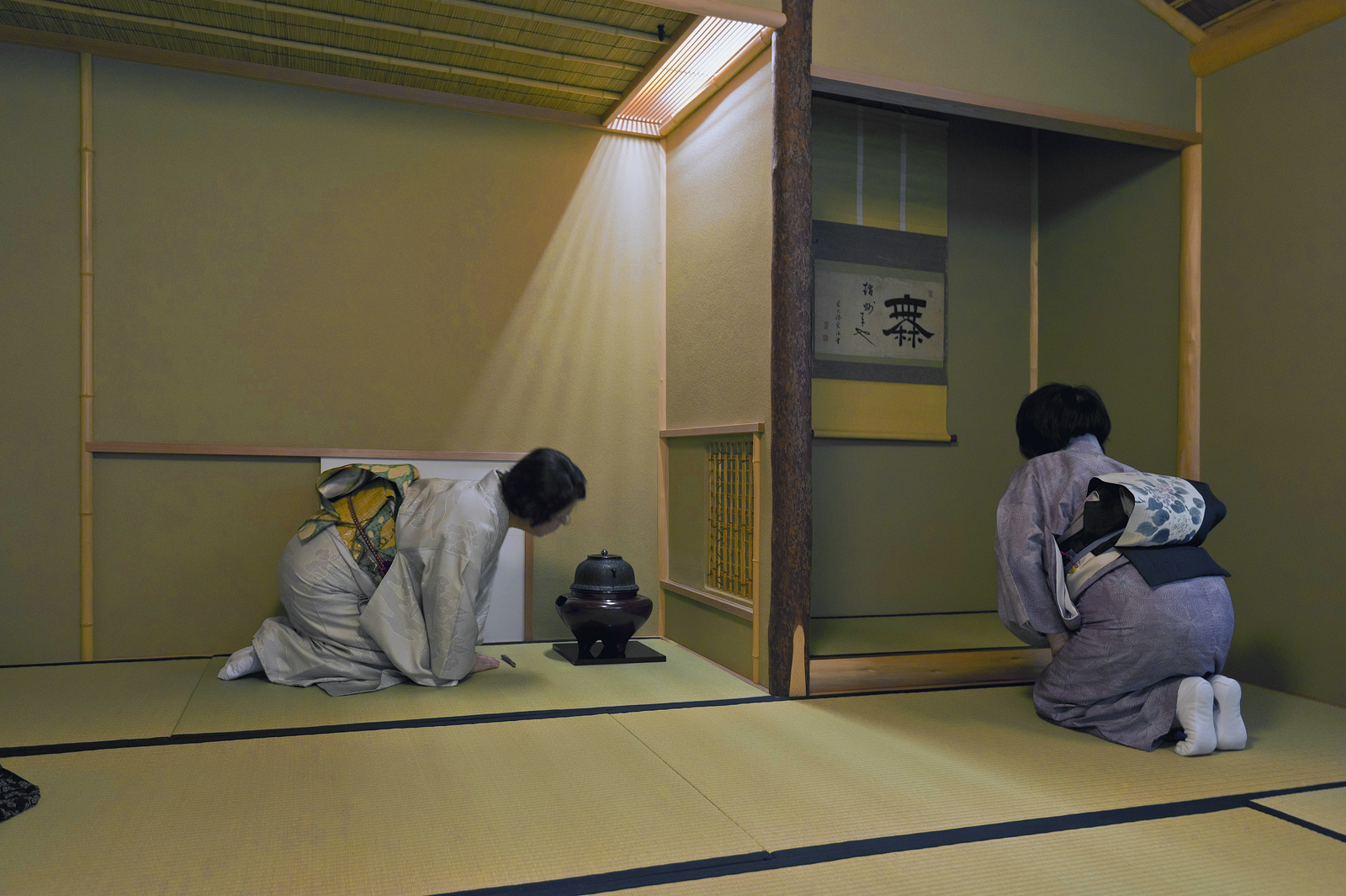 The Way of Tea or Japanese Tea Ceremony is a cultural activity involving the preparation and presentation of matcha, a powdered green tea. The manner in which it is performed, or the art of its performance, is called (o)temae. The first documented evidence of tea in Japan dates back to the 9th century, when it was taken by the Buddhist monk Eichū on his return from China, he personally prepared and served sencha (unground Japanese green tea) to the Emperor Saga in the year 815. By Imperial order just one year later, tea plantations began to be cultivated in the Kinki region of Japan. In China, tea had already been known, according to legend, for more than a thousand years and the custom of drinking it, first for medicinal, and then largely also for pleasurable reasons, was widespread throughout the country. In the early 9th century, Chinese author Lu Yu wrote The Classic of Tea, a treatise focusing on its cultivation and preparation. Lu Yu’s life had been heavily influenced by Buddhism, particularly the Zen–Chán school. His ideas would have a strong influence in the development of the Japanese tea ceremony. Around the end of the 12th century, the style of tea preparation called “tencha”, in which powdered matcha was placed into a bowl, hot water added, and the tea and hot water whipped together, was introduced to Japan by Eisai, another monk, on his return from China. He also took tea seeds back with him, which eventually produced tea that was of the most superb quality in all of Japan. By the 13th century, when the Kamakura Shogunate ruled the nation and tea and the luxuries associated with it became a kind of status symbol among the warrior class, there arose tea-tasting parties wherein contestants could win extravagant prizes for guessing the best quality tea—that grown in Kyoto, deriving from the seeds that Eisai brought from China. The Japanese tea ceremony developed as a “transformative practice”, and began to evolve its own aesthetic, in particular that of “sabis” and “wabis” principles. “Wabi” represents the inner, or spiritual, experiences of human lives. Its original meaning indicated quiet or sober refinement, or subdued taste “characterized by humility, restraint, simplicity, naturalism, profundity, imperfection, and asymmetry” and emphasizes simple, unadorned objects and architectural space, and celebrates the mellow beauty that time and care impart to materials. “Sabi,” on the other hand, represents the outer, or material side of life. Particularly among the nobility, understanding emptiness was considered the most effective means to spiritual awakening, while embracing imperfection was honoured as a healthy reminder to cherish our unpolished selves, here and now, just as we are – the first step to “satori” or enlightenment.
The Way of Tea or Japanese Tea Ceremony is a cultural activity involving the preparation and presentation of matcha, a powdered green tea. The manner in which it is performed, or the art of its performance, is called (o)temae. The first documented evidence of tea in Japan dates back to the 9th century, when it was taken by the Buddhist monk Eichū on his return from China, he personally prepared and served sencha (unground Japanese green tea) to the Emperor Saga in the year 815. By Imperial order just one year later, tea plantations began to be cultivated in the Kinki region of Japan. In China, tea had already been known, according to legend, for more than a thousand years and the custom of drinking it, first for medicinal, and then largely also for pleasurable reasons, was widespread throughout the country. In the early 9th century, Chinese author Lu Yu wrote The Classic of Tea, a treatise focusing on its cultivation and preparation. Lu Yu’s life had been heavily influenced by Buddhism, particularly the Zen–Chán school. His ideas would have a strong influence in the development of the Japanese tea ceremony. Around the end of the 12th century, the style of tea preparation called “tencha”, in which powdered matcha was placed into a bowl, hot water added, and the tea and hot water whipped together, was introduced to Japan by Eisai, another monk, on his return from China. He also took tea seeds back with him, which eventually produced tea that was of the most superb quality in all of Japan. By the 13th century, when the Kamakura Shogunate ruled the nation and tea and the luxuries associated with it became a kind of status symbol among the warrior class, there arose tea-tasting parties wherein contestants could win extravagant prizes for guessing the best quality tea—that grown in Kyoto, deriving from the seeds that Eisai brought from China. The Japanese tea ceremony developed as a “transformative practice”, and began to evolve its own aesthetic, in particular that of “sabis” and “wabis” principles. “Wabi” represents the inner, or spiritual, experiences of human lives. Its original meaning indicated quiet or sober refinement, or subdued taste “characterized by humility, restraint, simplicity, naturalism, profundity, imperfection, and asymmetry” and emphasizes simple, unadorned objects and architectural space, and celebrates the mellow beauty that time and care impart to materials. “Sabi,” on the other hand, represents the outer, or material side of life. Particularly among the nobility, understanding emptiness was considered the most effective means to spiritual awakening, while embracing imperfection was honoured as a healthy reminder to cherish our unpolished selves, here and now, just as we are – the first step to “satori” or enlightenment.
By the 16th century, tea drinking had spread to all levels of society in Japan. Sen no Rikyū and his work Southern Record, perhaps the most well-known — and still revered — historical figure in tea ceremony, followed his master Takeno Jōō’s concept of ichi-go ichi-e, a philosophy that each meeting should be treasured, for it can never be reproduced. His teachings perfected many newly developed forms in architecture and gardens, art, and the full development of the “way of tea”. The principles he set forward — harmony, respect, purity, and tranquility are still central to tea ceremony. A purpose-built room designed for the wabi style of tea is called a chashitsu, and is ideally 4.5 tatami in floor area. It has a low ceiling; a hearth built into the floor; shoji screens; an alcove for hanging scrolls and placing other decorative objects; and several entrances for host and guests. It also has an attached preparation area known as a mizuya. Building materials and decorations are deliberately simple and rustic in wabi style tea rooms. Chashitsu can also refer to free-standing buildings for tea ceremony. Known in English as tea houses, such structures may contain several tea rooms of different sizes and styles, dressing and waiting rooms, and other amenities, and be surrounded by a tea garden called a roji. There are two main ways of preparing matcha for the tea ceremony: thick (koicha) and thin (usucha), with the best quality tea leaves used in preparing thick tea. As the terms imply, koicha is a thick blend of matcha and hot water that requires about three times as much tea to the equivalent amount of water than usucha. To prepare usucha, matcha and hot water are whipped using the tea whisk (chasen), while koicha is kneaded with the whisk to smoothly blend the large amount of powdered tea with the water. Thin tea is served to each guest in an individual bowl, while one bowl of thick tea is shared among several guests. This style of sharing a bowl of koicha first appeared in historical documents in 1586, and is a method considered to have been invented by Sen no Rikyū. Procedures vary from school to school, and with the time of year, time of day, venue, and other considerations.
The guests arrive a little before the appointed time and enter an interior waiting room, where they store unneeded items such as coats, and put on fresh tabi. Ideally, the waiting room has a tatami floor and an alcove (tokonoma), in which is displayed a hanging scroll which may allude to the season, the theme of the chaji, or some other appropriate theme. The guests are served a cup of the hot water, kombu tea, roasted barley tea, or sakurayu. When all the guests have arrived and finished their preparations, they proceed to the outdoor waiting bench in the roji, where they remain until summoned by the host. Following a silent bow between host and guests, the guests proceed in order to a stone basin where they ritually purify themselves by washing their hands and rinsing their mouths with water at tsukubai, and then continue along the roji to the tea house. They remove their footwear and enter the tea room through a small “crawling-in” door (nijiri-guchi), and proceed to view the items placed in the tokonoma and any tea equipment placed ready in the room, and are then seated seiza-style on the tatami in order of prestige. When the last guest has taken their place, they close the door with an audible sound to alert the host, who enters the tea room and welcomes each guest, and then answers questions posed by the first guest about the scroll and other items.
The chaji begins in the cool months with the laying of the charcoal fire which is used to heat the water. Following this, guests are served a meal in several courses accompanied by sake and followed by a small sweet (wagashi) eaten from special paper called kaishi, which each guest carries, often in a decorative wallet or tucked into the breast of the kimono. After the meal, there is a break called a nakadachi, during which the guests return to the waiting shelter until summoned again by the host, who uses the break to sweep the tea room, take down the scroll and replace it with a flower arrangement, open the tea room’s shutters, and make preparations for serving the tea. Having been summoned back to the tea room by the sound of a bell or gong rung in prescribed ways, the guests again purify themselves and examine the items placed in the tea room. The host then enters, ritually cleanses each utensil — including the tea bowl, whisk, and tea scoop — in the presence of the guests in a precise order and using prescribed motions, and places them in an exact arrangement according to the particular temae procedure being performed. When the preparation of the utensils is complete, the host prepares thick tea. Bows are exchanged between the host and the guest receiving the tea. The guest then bows to the second guest, and raises the bowl in a gesture of respect to the host. The guest rotates the bowl to avoid drinking from its front, takes a sip, and compliments the host on the tea. After taking a few sips, the guest wipes clean the rim of the bowl and passes it to the second guest. The procedure is repeated until all guests have taken tea from the same bowl; each guest then has an opportunity to admire the bowl before it is returned to the host, who then cleanses the equipment and leaves the tea room. The host will then proceed with the preparation of an individual bowl of thin tea to be served to each guest. While in earlier portions of the gathering conversation is limited to a few formal comments exchanged between the first guest and the host, in the usucha portion, after a similar ritual exchange, the guests may engage in casual conversation. After all the guests have taken tea, the host cleans the utensils in preparation for putting them away. The guest of honour will request that the host allow the guests to examine some of the utensils, and each guest in turn examines each item, including the tea caddy and the tea scoop. The items are treated with extreme care and reverence as they may be priceless, irreplaceable, handmade antiques, and guests often use a special brocaded cloth to handle them. The host then collects the utensils, and the guests leave the tea house. The host bows from the door, and the ceremony is over. A tea ceremony can last up to four hours, depending on the type of ceremony performed, the number of guests, and the types of meal and tea served.